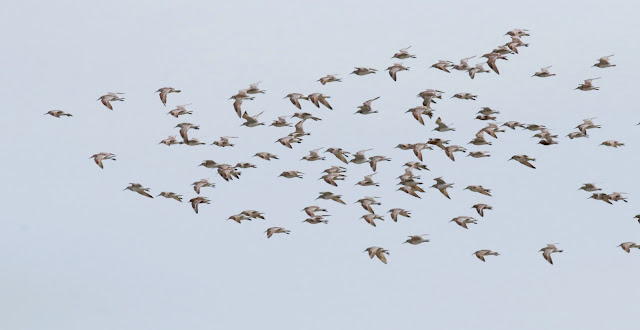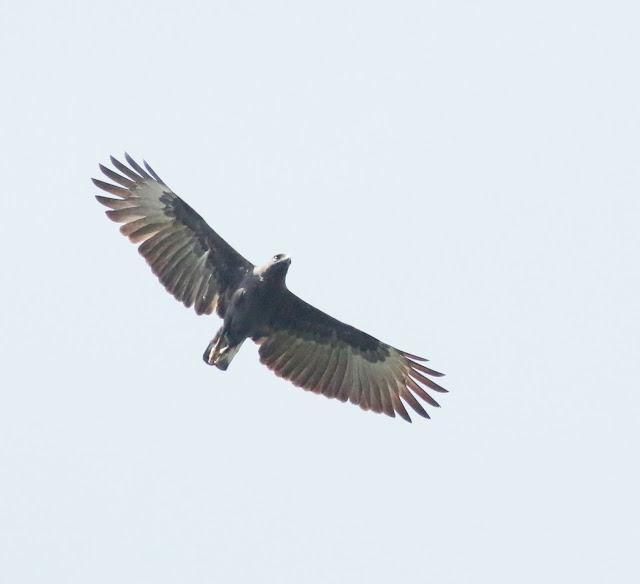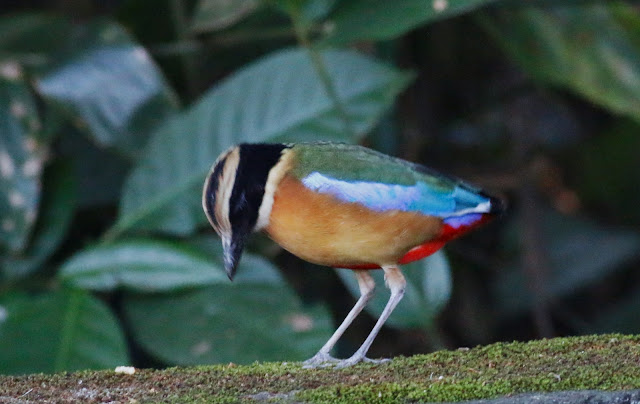For the month of April, there are fewer birds seen because less birding trips. Kena marah from wife lah! So have to kwai kwai stay at home. Here are just a few interesting ones.
Blue-throated Bee Eater
They certainly look stunning in their breeding plumage.
Slaty-legged Crake
I went all the way to Penang just to see this uncommon crake. It was the first time this swampy area received such as interesting bird. At first it appeared at 7.30am and I missed it because I have just arrived at 8.00am. More and more birders came later as well.
Most crakes are illusive birds as they are mainly shy and cryptic. So to see such an uncommon crake out in the open its a wonderful sight to behold.
After enjoying the fleeting views of the crake, one kind birder told me that he spotted an owl nearby. So my next question was "Where"? and off I went looking for it.
Spotted Wood Owl
After a short walk, I saw something dark at the same location as pointed out by the earlier birder. Luckily it was still fast asleep. So it ain't going anywhere.
As there were some noises below, it kept one eye open. After while I left the sleeping owl alone and went on to look for other birds.
Cattle Egret
I usually see humans chewing a twig in the mouth but not a bird. This Cattle Egret was shot from inside my car which was stationed just beside it.
Later that day I went back to my kampung to search for more birds. As I was driving slowly along the gravel road (which was very smooth after someone has repaired it), I spotted a black object dropping on the road from a distance.
Afterwards I saw a big black bird came out from a nearby bush taking away the object. Immediately I knew it was a Greater Coucal. The above photo was taken inside my car. Not an easy shot as I need to shoot while the car is moving.
It went straight back to the roadside bush from where it came from.
I was curious to know what was the thing which it has taken. So I drove slowly and stop right beside it. Then I realise that it was a mutilated squirrel. I came down and started looking up at the trees thinking it could be the work of a musang or a macaque.
From where I stood I saw a raptor circling above.
Its a Changeable Hawk Eagle (Dark Morph)
It kept circling above the tree where the 'dark object' had fallen earlier.
Hence I believe the earlier squirrel could have been dropped by this same raptor. It was probably checking whether there is a possibility that it could retrieve its incomplete meal.
After awhile, I guess it gave up and flew further away.
Oops! Initially I thought this could be a Dark-necked Tailorbird but another birder informed me that it is a breeding male Common Tailorbird instead - ID from its long tail streamers !! It was actually looking at the circling raptor above.
THAT'S ALL FOR NOW. NEXT POST WILL BE ALL ABOUT WADERS !


















































































